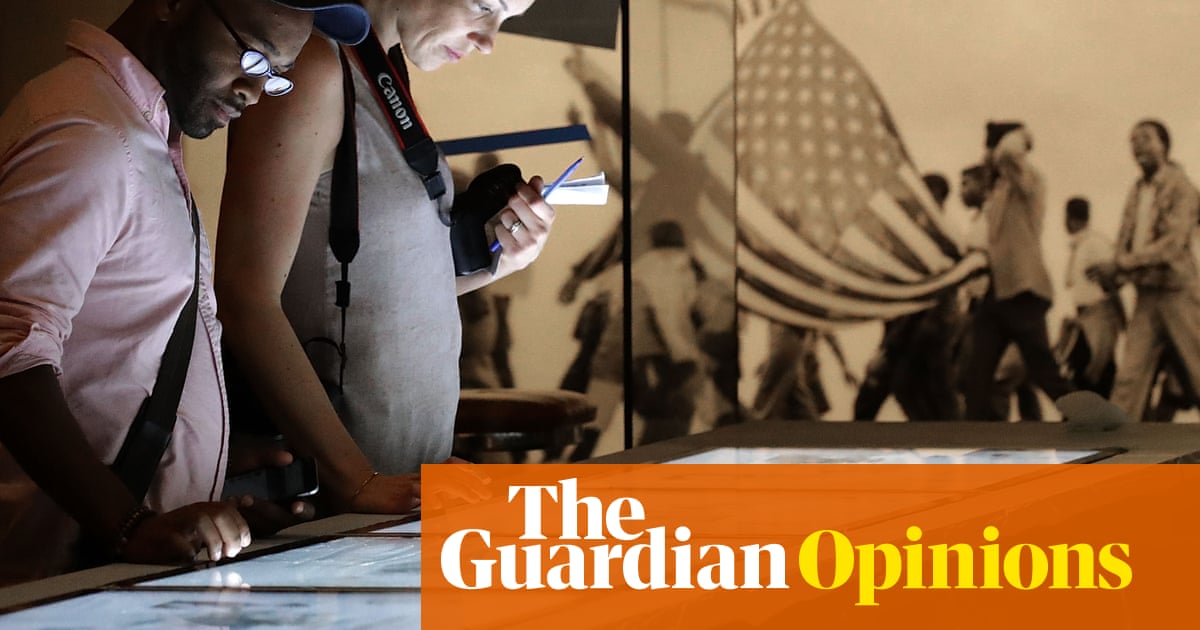In one of his recent Truth Social posts, Donald Trumpappeared to fireKim Sajet – the fearless and utterly brilliant director of the Smithsonian Institution’s National Portrait Gallery in Washington DC. The president used his social media platform to claim that Sajet’s support for diversity, equity and inclusion (DEI) made her unsuitable for her role. “Upon the request and recommendation of many people, I am hereby terminating the employment of Kim Sajet as Director of the National Portrait Gallery”, Trump wrote. “She is a highly partisan person, and a strong supporter of DEI, which is totally inappropriate for her position. Her replacement will be named shortly.”
Where to start? By now, we all know the arts has become the terrain for a brutal proxy battle for hearts and minds. A culture war 2.0, where not just reputations are at stake, but institutions, whole sectors and ways of thinking. But I am hoping that even Trump’s support base have begun to grow a little bored with these attacks on figures and institutions in the cultural sector. The culture war has moved beyond farce into the deeply tragic.
I am sure even many of the president’s most loyal supporters know deep down that the Smithsonian (a vast complex of 21 museums) is a genuine force for good, an institution that represents so much of the US at its very best. And like the Kennedy Center, the cultural institution that Trumptook control ofearlier this year, or the universitieshis administration has attacked, the Smithsonian is a fish in a barrel: easy to bully, its financial destiny in significant part tied to public funding, with limited scope to defend itself. This contrived political theatre damages critical institutions, threatens the careers of talented, dedicated people, and its repercussions will be deep and long-lasting.
Good museums are not sleepy institutions trapped in heritage-aspic. Across its 178-year history, the Smithsonian has consistently evolved to reflect ambient change and address public need. Like many other national museums around the world, these changes, particularly in recent years, have been driven by an aspiration to engage and enfranchise, to broaden audiences and to catalyse national conversations. I would have thought that seeking to give value back to a greater number of the population is uncontroversial. Institutions this important, mostly sponsored by the public, must simply, continually, work to be ever more universal, inclusive and open. Left or right, that has value. In times like these, when we are, as citizens of western democracies, so riven and divided, the arts have a job to do of being a space for inclusive debate.
But the truth is that DEI isn’t some new-fangled indulgence. That drive to be inclusive is what good museums were created to deliver. Twenty-five years ago, I began my career at the British Museum. I still remember reading its founding purpose for the first time. The British Museum was created for “all studious and curious persons”. I remember thinking that the word that does the really hard work in that statement is “all”. The British Museum was created in the mid-18th century around an inclusive imperative, around the idea that we might all hope to find ourselves reflected in its spaces and concerns.
Its founders must have recognised the powerful need for a national museum: it was created at a time when Britain was going through a period of existential anxiety, when Scots were rebelling; the country needed a unifying narrative. I am sure the British Museum’s founders knew exactly what they were doing when they committed the institution to that beautifully enfranchising ambition of being for us all. And yes, I know museums have so often failed miserably to live up to these inclusive objectives, but we must never stop trying, nor relinquish the basis on which the public can hold us to account.
Universities and museums are vital for healthy societies, and their independence, their bravery, their sometimes maddening honesty, underpins so much that is important. We undermine that at our peril. I spent a number of treasured years as a Smithsonian museum director and fell for its ethos and its dedicated people. It was founded on an ambition to propagate “the increase and diffusion of knowledge”. It was created to enable transformational change through sharing and empowering US citizens with knowledge, with truth. I cannot think of a time when this has been more important.
It is unclear whether Trump has the authority to fire Sajet. What is clear is that his move is designed to demoralise her and all my former Smithsonian colleagues. That’s why, directing a different museum now, across the Atlantic, I feel moved to write. We in the cultural sector everywhere need to stand up and be counted, we need to celebrate Kim Sajet, we need to not retreat from diversity here in Britain. To my former colleagues,I say that speaking the truth and having the courage to do so when it is difficult does not make you unsuitable for your roles in a demographically complex democracy; it is probably the most important aspect of what we are called upon to do. It is easy writing the diversity action plan, but having the moral courage to stand up for those principles when they are needed – that is heroic.
Gus Casely-Hayford is a curator, cultural historian, broadcaster and lecturer who is currently the director ofV&A East
